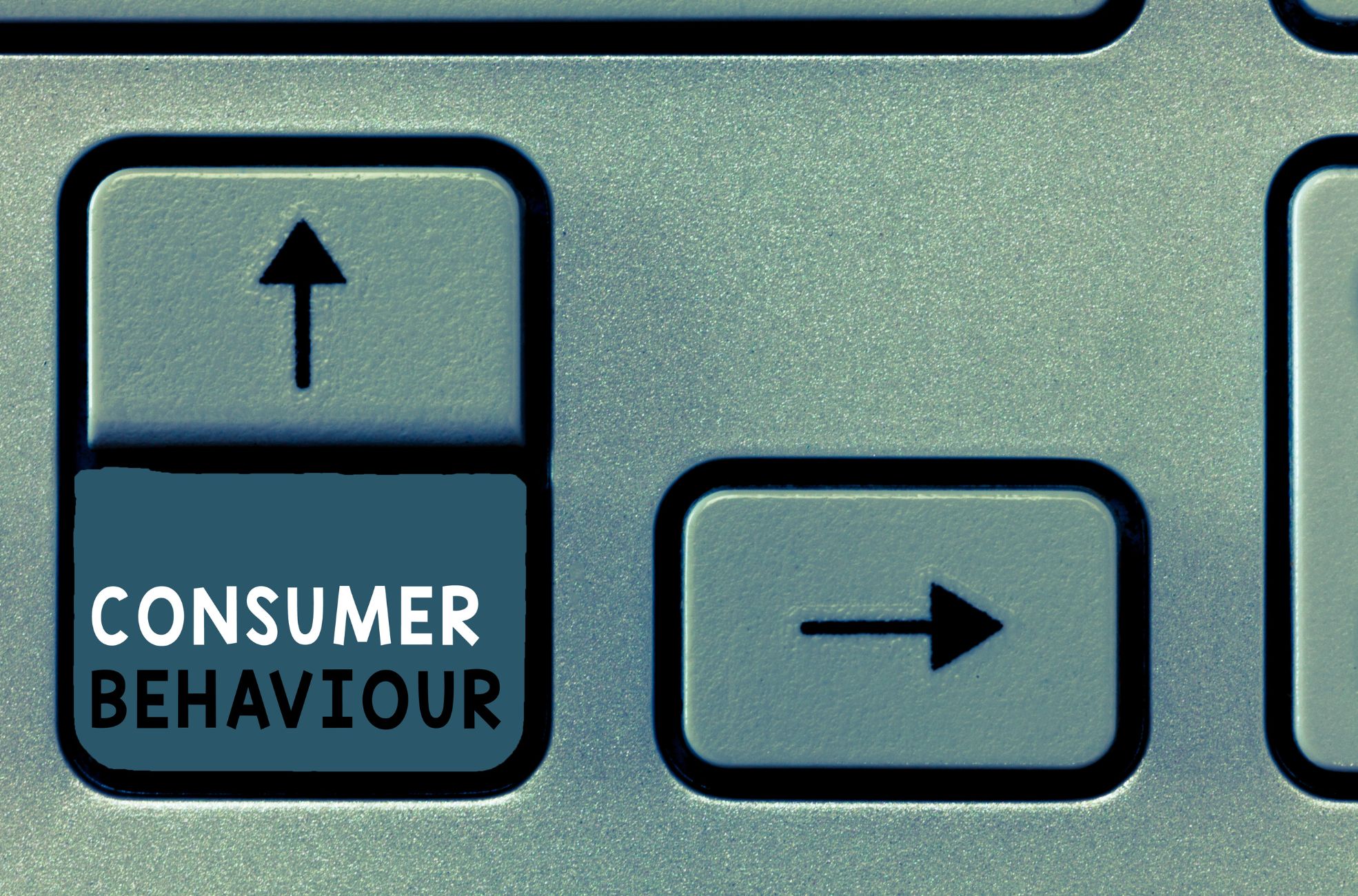Have you ever wondered why you chose a particular product over another? Discover the fascinating realm of consumer behaviour, a field that explores the motivations, emotions, and decisions behind each purchase you make. The world around us heavily influences our choices. Everything from personal preferences to social influences and marketing campaigns plays a role in our purchasing decisions.
Understanding consumer behaviour has a significant impact on not only how we make decisions, but also how businesses can successfully market their products. This article dives deep into the four main types of consumer behaviours, the significant factors influencing these behaviours, and how this knowledge is applied in marketing strategies.
What does consumer behaviour mean to you?
Consumer behaviour is a fascinating field that delves into how you, as an individual or part of an organisation, select, utilise, and dispose of goods and services. It’s a dynamic blend of emotion and cognition, behaviour, and environmental events that shape the exchange aspects of your life. This practical social science borrows from various disciplines, like psychology, biology, chemistry, and economics, to make sense of the decision-making processes and the emotional, mental, and behavioural responses that come before or after these activities.

Different types of consumer behaviour
Consumer behaviour can fall into one of four main categories: Complex buying behaviour, Dissonance-reducing buying behaviour, Habitual buying behaviour, and Variety-seeking behaviour.
Complex buying behaviour
You’ll encounter complex buying behaviour when you’re about to make a significant purchase, like a car or a house. These items aren’t cheap and aren’t bought frequently, and you’re highly involved in the purchase process. You’ll likely conduct extensive research before committing to such a high-value investment.
Dissonance-reducing buying behaviour
Dissonance-reducing buying behaviour occurs when you’re highly involved in the purchase process but struggle to distinguish the differences between brands. This behaviour is common when you’re buying products that are expensive, infrequent, or risky, and when you perceive little difference between the available brands.
Habitual buying behaviour
Habitual buying behaviour is marked by very little involvement in the product or brand category. You tend to make these purchases out of habit, without much thought or research. This behaviour is common for low-cost items that you buy regularly, like groceries or household items.
Understanding consumer behaviour
Your consumers’ behaviour is shaped by a variety of factors. These include personal factors like your preferences, priorities, morals, and values, social factors like peer pressure and the influence of family, friends, and media. Economic conditions and marketing campaigns also play a part.
When you’re aware of these behaviours, you can create effective marketing strategies, target specific groups, improve brand loyalty, identify emerging trends, and understand what influences your buying decisions.
The purchasing decision process is a complex one. It starts with problem recognition, followed by information search and evaluation stages. Here, you work through processes designed to arrive at several brands or products that represent viable purchase alternatives. Once the alternatives have been evaluated, you firm up your resolve to proceed to the actual purchase. After experiencing the product or service, you enter the final stage, namely post-purchase evaluation.
Consumer behaviour also examines how innovative new products, services, ideas, or technologies spread through groups. Insights about how innovations are diffused can help you speed up the new product adoption process and fine-tune the marketing program at different stages of the diffusion process.
Other aspects of consumer behaviour include brand-switching and channel-switching, impulse buying, the role of emotion and affect, customer loyalty and customer citizenship behaviour.
The study of consumer behaviour has evolved. Traditional models were developed by scholars such as Fishbein and Ajzen and Howard and Sheth in the 1960s and 1970s. More recently, Shun and Yunjie have argued that your online consumer behaviour is different to offline behaviour and as a result needs new theories or models.
Different types of online behaviour include “trackers”, “hunters”, and “explorers”. The influence of the Internet on your buying process includes stages such as being unaware, becoming aware of product need, supplier search, evaluation and selection, purchase, and post-purchase.

The Significance of Consumer Behaviour
The study of consumer behaviour provides a deep understanding of the motivations behind purchasing decisions, influenced by a myriad of cultural, social, personal, and psychological elements. These elements are subject to change due to factors such as evolving trends, technological advancements, lifestyle shifts, and changes in disposable income.
The Impact of Consumer Behaviour on Marketing
For marketing professionals, understanding consumer behaviour is pivotal in crafting effective strategies. It provides insights into customer expectations, thereby influencing all facets of marketing, from product development to pricing structures.
Digital tools such as HubSpot, Optimizely, and Google Analytics are instrumental in tracking and influencing customer behaviours and enhancing user experiences. These platforms offer valuable insights into user preferences and actions, facilitating personalised marketing efforts and optimising the customer journey.
Consumer Differentiation and its Role
Consumer differentiation, a key aspect of consumer behaviour, aids in the formation of a target consumer group exhibiting similar behavioural patterns.
One approach to achieving this is through product differentiation, which distinguishes your offerings from those of competitors. This can be accomplished through unique product design, marketing techniques, packaging, and pricing strategies. A successful product differentiation strategy should not only match the features of competing products but also offer exclusive benefits.
In the realm of ecommerce, customer profiles can be created based on data points such as demographics, geographic location, product channels, and past purchases. Machine learning can be utilised to predict the future actions of these customer segments.
The Role of Consumer Behaviour in Customer Retention
Consumer behaviour significantly influences customer retention. Factors such as product updates, online reviews, and global events like the COVID-19 pandemic heavily sway customers.
While complex tools can be used to gauge customer satisfaction, often the most reliable indicator of customer growth can be obtained through a simple question: “Would you recommend us to a friend?”
Personalisation in marketing and sales not only enhances the pipeline and opportunities but also improves the conversion rate at each stage. Performance marketing, focusing on short-term sales, can be seamlessly integrated with brand-building activities aimed at fostering customer loyalty.

Consumer Behaviour in Predicting Market Trends
Consumer behaviour is instrumental in predicting market trends. For instance, when introducing eco-friendly products, a common paradox is observed where customers express positive attitudes but do not follow through with purchases.
To overcome this, it’s crucial to establish a strong emotional connection with customers.
Customers select products based on various factors such as price, brand image, quality, durability, taste, colour, or current trends. Identifying what consumers truly value can be a complex task. However, there are universal building blocks of value that can be leveraged to enhance performance in existing markets or penetrate new ones.
Delving Deeper into Influences on Consumer Choices
Consumer behaviour is an intricate web of decisions and actions taken by individuals or entities to fulfil their needs. It’s an interplay of various factors that shape how one selects, acquires, utilises, or disposes of products or services.
The Role of Psychological Elements
Psychological components like motivation, perception, learning, attitudes, and beliefs are potent influencers of consumer behaviour. For instance, motivation can be stirred by basic needs such as hunger or thirst, driving one to purchase food or beverages. Perception, on the other hand, is shaped by the information we gather and interpret about a product, which may vary among individuals with the same needs due to selective attention, distortion, and retention. Learning is another influential factor that evolves over time, impacting consumer behaviour based on the accumulation of knowledge and skills.
The Impact of Personal Factors
Personal elements such as age, income, occupation, lifestyle, and personality significantly sway consumer choices. Purchasing decisions vary across different age groups, occupations, and income levels. A person’s lifestyle, reflecting their attitudes, social relations, and environment, also impacts their buying habits. Furthermore, the economic health of a nation or market can sway these habits.
The Influence of Social Factors
Social elements, including family, reference groups, roles, and status, have a substantial effect on consumer behaviour. Reference groups act as benchmarks against which individuals compare themselves. Family dynamics play a significant part in purchasing choices. Moreover, one’s societal role also determines their buying tendencies.
Other Elements Shaping Consumer Choices
Cultural factors such as culture, subculture, and social class, along with education, religious and ethnic backgrounds, and sexual orientation, can significantly sway consumer purchases.
Understanding these influences allows you to formulate effective marketing plans, develop products that cater to your customers’ preferences and needs, and comprehend the competitive landscape.
The study of consumer behaviour employs various techniques such as surveys, focus groups, interviews, observational research, and experiments. It also includes data analysis from sales data, web analytics, and social media. Online surveys are highly efficient in studying consumer behaviour, aiding in devising pricing models and defining the maximum amount a customer is willing to pay for a specific set of features.

Implementing Consumer Behaviour Insights in Marketing Tactics
Factoring consumer behaviour into marketing approaches provides a strategic advantage. Comprehending unfulfilled consumer needs enables the creation of appealing offerings.
This understanding also aids in recognising diverse consumer segments, each with distinct desires. It assists in configuring an optimal combination of the four P’s — Product, Price, Place, and Promotion — to efficiently connect with these groups.
Brand Perception and its Influence
Brand perception can considerably affect consumer behaviour. The Dynata Global Trends Report implies a subtle identification of consumers with brands. Only a minor percentage of people concurred with the statement, “The brands you buy say a lot about you.” Interestingly, a generational difference is noticeable in consumers’ attitudes towards brands.
A higher percentage of millennials associate the brands they purchase with their identity, contrasting with a lower percentage of Baby Boomers who have the same perception.
An effectively executed brand strategy influences all business aspects, correlating with consumer needs, emotions, and competitive scenarios. The strategy should aim to forge deeper emotional connections with customers and maintain uniformity across all brand points of contact.
Part of this strategy includes appreciating loyal customers, and promoting flexibility and relevancy in a dynamic, rapidly shifting market scenario.
The Role of Technological Advancements
Technology has a notable role in shaping consumer behaviour. Technological progress over the past decade has transformed the consumer purchase journey, leading to innovative ways of product research, purchase, and feedback.
As technology becomes more interwoven into daily life, understanding tech adoption rates, usage trends, and device preferences becomes vital for effectively reaching consumers and deciding the right channels for investment.
Key advancements in consumer-facing technology include the adoption of Voice Assistants (VA) and Voice-Activated devices. Such smart or connected devices have a significant impact on living environments. Voice-enabled tech and Internet of Things (IoT) devices could potentially be valuable tools for future market research.
Enhancing Consumer Interaction
The internet, and more specifically, social media, has brought about a monumental shift in customer behaviour. Social media has become a critical component of any marketing strategy. Consumers now anticipate their association with brands to extend beyond product utility.
Engagement marketing, which leads with content and offers value in return for consumer attention, is a primary aspect of this new marketing perspective. This strategy focuses on facilitating dialogue between customers and brands and leveraging customer loyalty on social platforms.
The objective of this strategy is to forge an emotional bond with the brand. This is achieved through ongoing relationships, sustained conversations, and regular innovation.
Enhancing consumer interaction is vital for business success. It’s a fundamental step in HubSpot’s flywheel model. This engagement can be encouraged through various means, including social media feedback, community forums, customised customer interactions, and effective follow-up strategies.
Customer loyalty programs and self-service methods can enhance the customer experience beyond the initial purchase. Regularly re-engaging existing customers can help your business distinguish itself from competitors. This re-engagement can be achieved through various means, including traditional mail, phone calls, and social media interactions.

Additional Influences on Purchase Decisions
Understanding the factors that propel your consumer behaviour is instrumental for businesses to craft effective marketing strategies, ones that can reach the target audience and impact their buying choices.
The Role of Exclusivity
While brand perception plays a critical role in purchase decisions, another significant factor is exclusivity. Consumers tend to place a higher value on unique offerings, which is why companies devote substantial resources to the development of one-of-a-kind products.
The Impact of Individual Cognitive Processes
Cognitive processes, such as personal preferences and values, play a crucial role in purchase decisions. For instance, the choice of fast food over home-cooked meals is a reflection of individual predilections. Furthermore, social proof or word-of-mouth marketing strategies tap into the influential role of social circles.
The E-commerce Revolution
The rise of e-commerce has brought about a transformation in buying behaviours, offering the flexibility to shop either in physical stores or online. However, the extent of online influence varies depending on the level of investment a purchase requires. For instance, online research has a more profound impact on significant investments, such as cell phones, compared to smaller ones like music purchases. Additionally, the persuasive power of social media is evident as it prompts a higher likelihood of increased spending.
Payment Methods and Their Influence
The mode of payment chosen can also steer consumer behaviour. Studies have linked the use of credit cards to heightened spending. Similarly, the adoption of mobile payment technology is associated with credit card behaviour. However, for online shoppers, the reliability of shipment conditions is critical for satisfaction, emphasizing the need for businesses to ensure efficient delivery services.
Unlocking the Power of Consumer Behaviour
To unravel the complex ecosystem of consumer behaviour is to hold the key to successful marketing strategies. This intricate interplay of social, personal, psychological, and cultural influences shapes the way businesses operate, guiding their marketing endeavours.
By understanding the cognitive processes, personal preferences, and societal interactions that influence purchasing decisions, businesses can cater precisely to their audiences’ needs. They can fine-tune their products, services, and marketing tactics to ensure they’re not merely meeting but exceeding customer expectations.
Unleashing the power of technology is also crucial in this endeavour. From sophisticated marketing tools like HubSpot and Google Analytics to smart devices and e-commerce platforms, technology empowers businesses to monitor, analyse, and influence consumer behaviour effectively.
Whether you’re a marketer seeking to optimise your approach, an innovator looking to introduce a new product to the market, or a business attempting to better understand your customer base, delving into the science of consumer behaviour provides invaluable insights. It offers a roadmap to deliver exceptional customer experiences, accurately predict market trends, and ultimately, drive business success.
Remember, at the heart of every purchasing decision lies a consumer informed by a myriad of factors. Understanding these factors and how they drive behaviour is the key to unlocking the full potential of your business.









